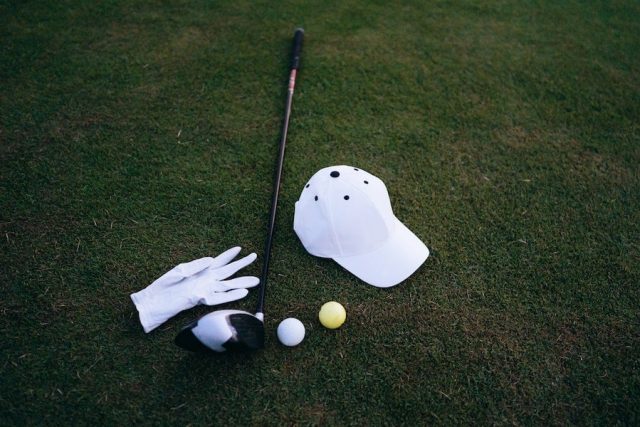The game of golf is an intricate one, and selecting the correct gear to enhance your play can be a challenging task. With so many different clubs, balls, bags, shoes, and other equipment on the market today it can be hard to decide which pieces you should invest in for optimal performance. To ensure that you have all of the right gear for improving your game, it’s important to consider some key factors before making a purchase. By taking into account things like budget constraints, personal preferences, and skill level this article will help guide you through the process to make sure that you select only what suits your individual needs when it comes time to buy new golfing equipment.
Gather Information
To make an informed decision about your golf gear, you should first gather information about the different types of equipment available. Start by researching various brands and their product ranges. Look for information online, such as equipment info from Golfer Geeks or golfing tips from another source. It’s also helpful to look up reviews from other golfers who have tested the same items you are considering buying. This can give you a better idea of which products come highly recommended, as well as potential drawbacks or issues that may arise when using certain gear.
Understanding Your Skill Level
The gear you select should align with your current skill level and your golfing goals. As a novice golfer, investing in a premium set of clubs designed for professionals may not be the best decision. These clubs often require a higher level of precision and control that beginner golfers have yet to develop. Conversely, if you’re an experienced golfer looking to improve your performance and lower your handicap, it may be worth investing in higher-end equipment that can provide the advanced features you need.
Identify your golfing goals. Are you playing for leisure or do you aim to compete professionally? Your answers will guide your gear choices. For example, recreational players might prioritize comfort and durability over technical features, while competitive players might opt for equipment that can help enhance precision and control. Always remember, the best golf gear for you is the one that matches your skill level and helps you meet your golfing goals.
Club Selection Strategies
Choosing the right clubs requires a keen understanding of your play style, golf course, and skill level. If you’re a long hitter, you may prioritize drivers or fairway woods that increase your distance. Alternatively, for those who excel in precision, a set of irons offering control and accuracy may be a better choice.
Pay attention to the course conditions where you usually play. If your home course is laden with bunkers, a quality sand wedge should be integral to your club selection. Similarly, if you play on courses with large greens, a putter with excellent roll and balance would be a wise investment.
Club selection is also about finding the right fit in terms of weight, length, and grip size. Clubs that are too heavy or too light, too long or too short, or with a grip size that doesn’t suit your hand, can all negatively impact your swing mechanics and overall performance.
Fitting Matters
One of the most overlooked aspects of selecting golf gear is ensuring the proper fit. Properly fitted clubs and equipment can significantly enhance your game. A club that’s too long, for example, can cause off-center hits and a loss of control, while a club that’s too short can limit your distance and make it difficult to hit solid shots.
The same principles apply to golf gloves, shoes, and golf bags. A well-fitted glove improves grip, provides better control, and prevents blisters, while properly sized shoes provide stability and comfort, preventing potential injuries. A golf bag that suits your physical abilities makes it easier to move around the course, reducing strain and fatigue.
It’s essential to work with a professional club fitter or a reputable golf store to find the right fit for your body size, strength, and swing style. They will assess aspects such as club length, lie angle, grip size, shaft flex, and the weight of your clubs. This personalized approach ensures that your golf equipment complements your game, rather than hinders it.
Balancing Budget And Quality
Choosing golfing equipment that offers both value and performance requires a balanced approach. While it may be tempting to opt for the most expensive gear in hopes that it will improve your game, remember that price does not always equate to quality. Similarly, selecting the cheapest options may lead to underperformance and frequent replacements, leading to higher costs in the long run.
Start by setting a realistic budget based on your golfing needs and objectives. Factor in the essential items first, such as clubs, golf balls, and a durable bag to store your equipment. Prioritize investing in quality where it counts most – for instance, a good quality driver or putter can have a significant impact on your game.
Next, research various brands and compare their offerings. Look for brands known for their durability and performance at various price points. Read reviews, visit golf forums, and seek advice from fellow golfers. Often, you’ll find that mid-range priced equipment offers a good balance of quality and value.
Material Matters
When it comes to golf gear, the materials used in manufacturing can greatly impact performance. Different materials can influence the weight, durability, and control of your golfing equipment.
For golf clubs, the two common materials used are steel and titanium. Steel clubs are typically more durable and offer better control, making them a suitable choice for beginners and intermediate players. Titanium clubs, on the other hand, are lighter and can enhance swing speed, which could lead to increased distance. They tend to be more expensive than steel, making them a popular choice for advanced and professional golfers.
The composition of the shaft also plays a crucial role. Graphite or steel is commonly used to make shafts. Steel shafts are heavier, offering more control and accuracy, while graphite shafts are lighter, promoting increased swing speed and distance. Your choice between steel and graphite will likely come down to your skill level and personal preference.
In conclusion, selecting the right golf gear for your needs involves careful consideration of several factors, such as your skill level, budget, and objectives. Take the time to research different brands and types of equipment, seeking advice from experienced players where necessary. Remember to prioritize quality over price – good-quality golfing equipment can help you perform better and have more fun on the green.














